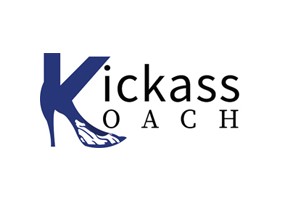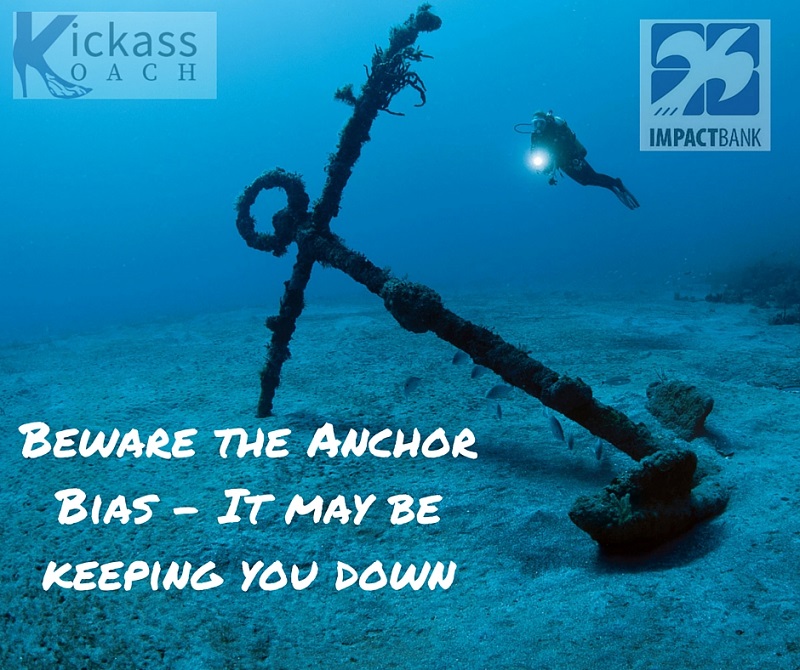Listen to Other Episodes of the Kickass Koach –
ImpactBank’s – the Kickass Koach is on i-Tunes AND you can always find the most recent episodes on ImpactBank’s main website page with a link to iTunes to make it easier for you to subscribe. Of course the podcast link on the website navigation bar also takes you to all episodes.
ImpactBank’s The Kickass Koach podcast supports senior leaders who want to quickly master the art and practice of leadership while stepping into a new assignment. When you were promoted into a senior position, if you’re like most people, you were immediately excited b y the opportunity to really make a difference. You also soon realized the immense, even daunting, challenge ahead of you.
y the opportunity to really make a difference. You also soon realized the immense, even daunting, challenge ahead of you.
You quickly had feelings of being lost, overwhelmed and very alone. It is completely understandable – you need to find your leadership rhythm. We help you find your leadership presence – one that will both command a room and warm hearts so people want to follow you and exceed your expectations – then you will know what it feels like to really make an impact.
ImpactBank’s “ON YOUR MARK…” 3 month program focuses exclusively on the first 90-180 days in a new assignment to give you a positive start. ImpactBank’s “THE IMPACT BUMP” 18 month program is for leaders who want to take the ‘kick-start” to a whole new level. We exclusively work with leaders in their first two years in role so we bring resources designed specifically to support your thinking and development.
This Week’s Additional Recommendations:
Episode 38: The opening episode for this series where I explore why this information is so important for the senior leader. Episode 39 explores Confirmation Bias.
Episode: 21: From the Kickass Koach archives- The second episode in the series on Leadership and the Brain. How social rejection in the workplace will trigger a response you don’t want.
Active Series- BIAS
Each week I play with the definition I use for BIAS. I do this because I don’t want to become complacent with bias and playing with the definition requires me to laugh at myself AND find another way to recognize them when they inflict themselves on me. By not getting too comfortable with my definition and allowing it to be more fluid and fun I am more apt to see the bias in real time. You may be a more influential leader when you become more comfortable with and deeply aware of them.
I invite you to find a definition for bias that will work for you and keep you aware of their impacts on your leadership.
If you are someone who has a system for thinking, reflecting and planning – make a review of your definition a part of your approach.
Definition of BIAS – this week’s iteration
Biases are like getting into a car with an unconscious drivers that takes you on the proverbial wild-goose chase.
THEY ARE invisible air you walk through without noticing the toxins around you even as they impact every breath you take –
THEY ARE sneaky cameleon-like organisms… hey, maybe like shape-shifters that evolve as needed to control your judgments without requiring much thought or effort on your part – they just feed your lazy brains, reducing them to their lowest common denominator –
AND, AS A RESULT, your biases control your thinking and decision making.
In the comment section share a variation of the definition that you think may offer a fun twist.
WHY SHOULD YOU CARE?
You MUST care if you really want to make a difference AND live a purpose-driven life
At ImpactBank, we are in the business of supporting senior leaders in the non-profit sector – healthcare, education, human services and so on. As a senior leader in the non-profit sector you are driven by purpose and you have a mandate to make a difference.
You made a choice to serve in the non-profit sector and with that comes a responsibility. You would never intentionally allow your office/workplace to get mired in destructive politics or the ugly hubris of ego, or the toxic energies of a selfish leader to the extent it was negatively impacting the community you serve.
negatively impacting the community you serve.
As the senior leader you are charged with specific deliverables and hopefully a clear mandate. Your biases and those held by members of your team will likely derail your efforts if you are not vigilant. It is not easy and it is essential you show yourself and your team some compassion when BIASES raise their ugly head AND you will make a major and positive impact when you start to develop strategies to take away the power the biases have. It is a clear path once you see it – never an easy one.
This Week’s BIAS
Anchoring Bias: your tendency to rely too heavily on a current belief OR the first piece of information you gathered.
This bias will prevent you, as a leader from considering important information in making key decisions.
A few questions to ask yourself:
- What’s a recurring problem you face? What are people on the team whispering behind your back? What kinds of decisions do you make that you know will be met with displeasure and you just remind yourself, “it comes with the territory”? How often do you change your mind after you get input?
 What’s a belief that may be keeping you from seeing things differently?
What’s a belief that may be keeping you from seeing things differently?- How often do you insist on handling things your way AND how often are you open to changing your mind after seeking input?
- What could be different if you entered every conversation expecting and looking for a new perspective, a different idea or answer to a current problem?
- What if you tested every decision to see what beliefs you have that may be driving you in its direction?
“Our current problems will not be solved at the level of thinking with which they were created.” A. Einstein
This Week’s Story
It all started with a limiting belief I had. I believed people would seek to take advantage whenever they could so they could win at my expense. Where did I get this belief? I feel quite confident I didn’t get it during my childhood because my parents were role models of what it is to be generous to a fault. I think this belief may have started slowly in high school when my outward confidence about most subject matter caused many to reach out to me for study assistance. I would help at my expense and rarely did as well as my “friends” on the final exam. Then early in my career I had plenty of situations where I would cover for people, take a risk to bring about change and so on. I learned that while I would speak up when other wouldn’t and push the limits to make things better it was rarely appreciated.
So that’s how I came to understand my belief – as you can see it came out of a limited, even self-serving perspective but once it had taken hold in my sub-conscious, it had an impact. I only saw it after the fact and of course I am only guessing at its source.
This belief became an anchoring bias that flourished while Director of Operations, with an ownership stake, in a wellness centre in the 90’s. The ownership team made me managing partner so, in addition to the day to day operation, I was responsible for anything related to financials AND turning our strategy into an actionable plan.
Well my anchoring bias came to life. I was a miser with the money – controlling every dime which seemed to make my partners happy but drove the contracted practitioners crazy. I don’t know who had it worse, the contractors who felt they had to fight for every dollar or me who felt I needed to hold the line.
Regardless, we all paid a price in relationship, focus and purpose. I could only see the biases of others. It was obvious to me that they had a “hippie” mindset and just wanted to ‘get along’ and sing Kum-ba-ya AND of course get more than their fair share too. You see what happened now that I put it this way? Layers of biases at work here, right?!
I was definitely drowning in the limiting belief and when the anchoring bias wasn’t pulling me down I was holding on to it so tightly I could get up for air. It was a very difficult time.
This Week’s EXTRA BIAS
Halo Effect- is a cognitive bias in which an observer’s overall impression of a person, company, brand, or product influences the observer’s feelings and thoughts about that entity’s character or properties. By the way it works both ways and the “other way” is often referred to as the “Horn Effect”.
While this is a variation on confirmation bias which we discussed last week, it fits with today’s story beautifully. Once I realized how my approach with resources (especially money) was making the clinic successful and viable but annoying the practitioners, I met with my partners to figure out how to manage it. I saw myself as tough and able to handle the “bad feelings” so I agreed to have one of the partners join me to meet with practitioners where she would play “good” cop and I “bad” cop. You know the drill.
BIG MISTAKE! She wore the halo and I the horns from then on. It was VERY hard to shake it and I would often play right into it by allowing all the partners to use me as the scape goat when they wanted to implement something in their division that was controversial.
How many of you have welcomed your direct reports using your name when they deliver unfortunate news to their teams? You and I both know managers will do this to take the burden off themselves AND YET I am even more surprised by the number of my clients who tell me they encourage it. STOP THAT!
A Few Things You Can Do
A few ideas on what a leader could do to mitigate the potential damage of Anchoring Bias.
- Attend less meetings. Hey that sounds good doesn’t it. I guarantee that once you accepted the senior position you had more meetings. AND many of you do more of the talking in these meetings. TRY THIS FOR THREE MONTHS…choose three regular meetings you would normally attend and specifically ask someone to take notes for you. Coach them each time on how to make the notes more helpful. When necessary, set up a 15 minute conversation with the note taker to ask questions to better understand the notes. You will notice contributions may have gone up, new ideas may have surfaced. As a senior leader you are the main reason these are suffocated. Once you get this you will be different in these meetings moving forward. You may be the anchor holding the team down.
- When you are back to attending meetings, ensuring someone else chairs most of them so you can observe, ask questions and participate.
- Sleep on it.
 There’s a reason this is a cliche and a reason I am repeating this point from last week. Time may give you perspective. See if you have more questions or a different angle on the idea or problem the next day and test it with a trusted member of your team – not always the same one.
There’s a reason this is a cliche and a reason I am repeating this point from last week. Time may give you perspective. See if you have more questions or a different angle on the idea or problem the next day and test it with a trusted member of your team – not always the same one. - Challenge your own assumptions and beliefs. Especially when you encounter frustration or anger from others because of the positions you are taking stop and reflect on what may be motivating your hard-line. For example, had I stopped to ask myself why the practitioners were acting out so much I may have decided to meet with a few of them privately to better understand and build relationships. That would likely have ensured I didn’t get the “horn effect” while Kathleen earned the halo.
- When you find yourself in conflict over a stand you are taking, consider whether a patter is forming and what biases may be related.
- Listen to your body. I found when I was deeply in anchoring bias I tended to clench my fists so it has become a touch point for my awareness now.
We both know that as a leader you feel pressure to make quick decisions that please everyone. ONLY when you recognize the impact bias is having on your perspective and decisions will you be able to mitigate the potential damage by establishing checks and balances. Taking a bit more time may annoy people even create some problems for you in the short term AND consulting and reflecting just a bit more before decisions will actually get you where you want to go more quickly.
more time may annoy people even create some problems for you in the short term AND consulting and reflecting just a bit more before decisions will actually get you where you want to go more quickly.
When you have a leadership perspective EVERYTHING will change.
Don’t let bias cloud your judgment.
NEXT TIME: Are you just realizing you don’t have as much control as you thought you did? We’ll explore how control is only and always just an illusion – Don’t miss it!
ImpactBank Diversity Program: The Diversity Dividend
Would you or your organization benefit?
We tailor the program to the organization’s and leader’s specific needs and current challenges.
Are there conflicts that persist between stakeholder groups or within specific work groups?
Do you routinely experience poor compliance rates? (In other words, are there requirements that workers just fail to meet on a regular basis? Do you have poor attendance or high attrition rates? Are there constantly mistakes made in working with stakeholders? Are acceptable levels of service only met by some members of the team or not consistently across the team?)
Do you find yourself frustrated because you have to say the same things over and over and you can’t get people to take critical requirements seriously?
Are there conflicts bubbling beneath the surface? Are you and your team tripping over biases and failing to achieve the required outcomes?

